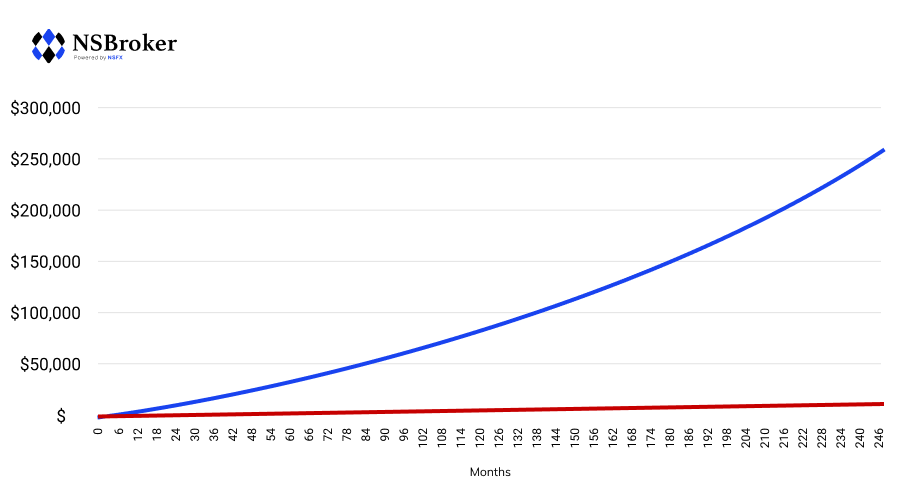Introduction to Micro Investing

Micro investing is something that was introduced in the financial world rather recently. The biggest reason for the rise of interest in it is the fact that it has made the financial market so much more accessible. Although the name is quite self-explanatory, there are some nuances you should be aware of before considering trying it out.
So, what is it?
Technology, above all else, made trading more accessible for everyone. The further the technological progress goes, the more people enter the market. Technology helps to destroy obstacles that were previously the reason many people couldn’t get into trading. As a result, the amount of traders is growing incessantly.
One of the innovations that broadened the market is micro-investing. What it does is it allows you to invest regularly, but with small amounts of money. Essentially, there are no brokerage account minimums. Nowadays, everyone can afford to invest no matter the capital. This method also proves to be quite appealing to young adults who were previously left out of the financial market circles. The fact that they are now able to make investments stimulates the development of healthy saving up habits.
Let’s take a closer look at how the concept works. While you can make deposits into your portfolio the usual way, you can also automate the process. Most of the apps on the market offer you to link your credit or debit card to your account to have regular deposits made automatically. Alternatively, you can also choose to have all your purchases rounded up. This means that whenever you spend any money, the app will round up the price and transfer the rest to your investment portfolio. For instance, you spend $19.50 on a new shirt. The app will round up the amount to $20, and add $0.50 to your investments.

What kind of investments can you make?
The better part of micro-investing platforms have their focus on ETFs. ETF stands for exchange-traded funds, which are a listed security that consists of other common securities, like stocks, commodities, real estate, etc. They are meant to represent and track an underlying index or sector. The apps also allow you to make direct fractional purchases of stocks. For example, if an Apple stock is at $100, you can buy 1/11 for $10.
While this is not possible on the stock market, micro-investing platforms help make this a reality. They buy the whole share and divide it among all users who are buying a fraction of the share.
What are the advantages?
One of the biggest pros of micro investments is low deposit minimums and fees. Typically, any investment has a certain minimum amount required to enter the trade. As a rule, this amount is rather big. As a result, a lot of people are deprived of the privilege of trading.
The obliteration of this minimum is the biggest advantage micro-investments have over other sectors of the market. The fact that a lot of platforms now allow you to enter the market with no more than $5 has made trading so much more appealing and accessible. Furthermore, micro investment platforms’ fees are much lower than those of traditional ones.
Opportunity for practice
Trading is something that requires a lot of research, education, and, above all, practice. It is, however, rather risky to enter the market with serious capital and no experience. The beauty of micro-investments is that you can learn and practice the basics of trading with relatively small risks. It’s much safer to make your first investments with $50 than $15 000. While in both cases you will be learning and potentially making money, the risks are uncomparable.
Another positive side of micro-investments is that it helps gain a healthier perspective on money. It might often seem like a few dollars here and there don’t matter all that much. But once you realize that you can use them for investments and potentially multiply the amount, you value it more. Potentially, you can use $5 to earn on micro investments, which will then allow you to transition to more considerable trades.
Who is it for?
There are numerous types of investments and each of them has its pros and cons. The choice of what is best is strictly individual. What are your goals and intentions? What experience do you already have? "While micro-investments are perfect for someone who is only getting into the financial market or doesn’t have enough funds to make other types of investments, it might not work at all for someone who is looking to make serious money.
Regardless of the fact that your returns grow over time, you will not be able to make a million with $5. If your ambitions are high, you will most likely just get frustrated with the dynamics in your portfolio. Another downside might be the fact that the variety of financial instruments micro investment platforms can currently offer is rather limited. Meanwhile, more traditional brokers offer more choices.
If you are interested in entering the market but feel like you cannot afford it at the moment, micro-investments are the perfect choice for you. You won’t have to stress too much about the money you’re putting in, but you will gain expertise and experience that will allow you to make more serious investments in the future. Regardless of the volumes of your trades, do your research and take things seriously. Only when trading is perceived as business, it becomes possible to acquire proper knowledge and understanding of how the road to success is paved.










